Unlike other natural hazards, wildland vegetation management is a key part of preparing for and responding to wildfire, as vegetation is both a vulnerable resource and a source of risk. After a fire, every community responds in different ways – depending on its location, culture, patterns of residential development and proximity to fire-prone forests.
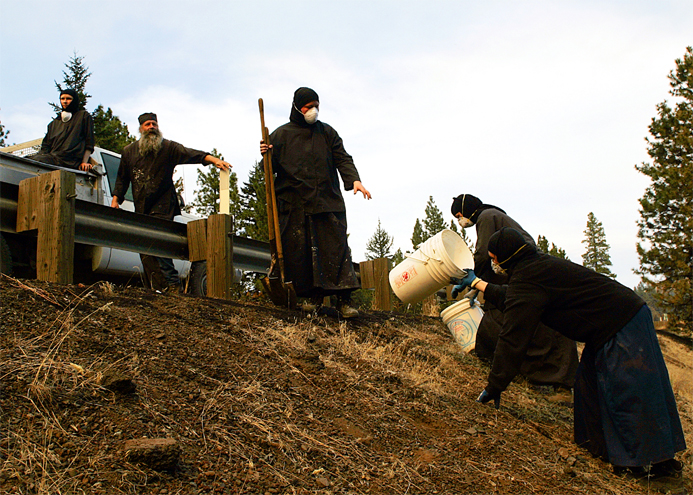
Engage the Whole CommunityNuns and priests from the Orthodox Monastery of Saint John the Forerunner in Goldendale, Washington used hoses and buckets to extinguish spot fires.
The Monastery Fire (2009), Klickitat County, Washington
Rural Klickitat County is mostly rural and sparsely populated by fiercely independent residents. Most homes are modest primary residences or simple second homes, with a few upscale second or retirement homes mixed in. Although 100 structures burned, only 12 homes were destroyed. Five were permanent mobile homes, seven vacation homes.
The fire-affected area is served by rural fire departments, staffed primarily by volunteers. Residents have a range of experience and knowledge of wildfire and forestry—some long-time residents and ranchers own their own heavy equipment and are familiar with wildland fire, while migrants and second-home owners are described as less familiar with wildland fire. There had previously been wildfires in the area of the Monastery fire, but housing was less extensive, and homes were not lost.
“We have enough large fires in the county here to where, in fact, I think it was the week before this fire, I had a big fire [of] 13,000 acres in my [fire] district and fortunately, we didn’t lose anything except an awful lot of grazing land and fencing and whatnot. It’s just a fact of life, you know?” Staffer, Community Fire Victims Fund
Response
This wildfire incident led to an outpouring of community support for those who had lost their homes, as well as some increased interest in vegetation management on individual properties. A community-managed fire victims fund was able to marshal local support and online donations from outside the region to replace mobile homes for the five full-time residents who had lost homes in the fire. A new State Department of Natural Resources position was created after the Monastery Fire, supported by federal funds, with a focus on improving forest health on private lands.
But challenges to good vegetation management on private property persist; funds and outreach capacity are limited. Not all residents are interested in actively managing forests to promote fire-resilience or creating defensible space. The local community’s culture of independence, self-sufficiency and privacy effectively blocks formal regulation to compel creating defensible space and using fire-resistant materials in home construction.
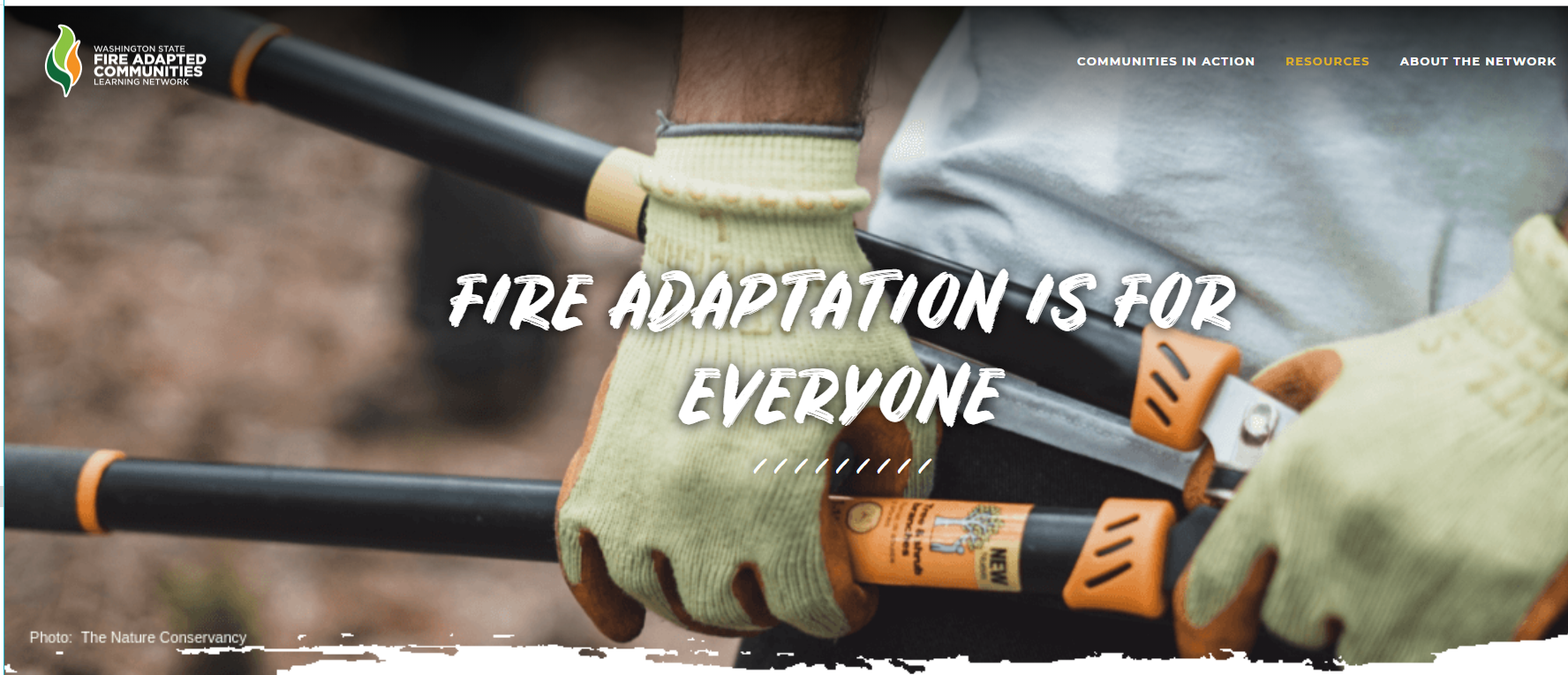
Fire Adapted Communities Learn from Each OtherLike many states, Washington has created a network to support communities as they adapt to increased risk of wildfires.
Highway 31 Fire (2009), Horry County, South Carolina
The Highway 31 fire burned in unincorporated areas of Horry County, SC, on both South Carolina Department of Natural Resources (DNR) land and private land. Seventy-six single-family homes were lost when the fire crossed into Barefoot Resort, a large residential, golf and vacation development in the city of North Myrtle Beach. Homes were mostly full-time residences, although some were used as seasonal homes. Many homeowners were retirees. Seventy-six homes were destroyed; one first responder died.
Windsor Green Fire (2013), Horry County, South Carolina
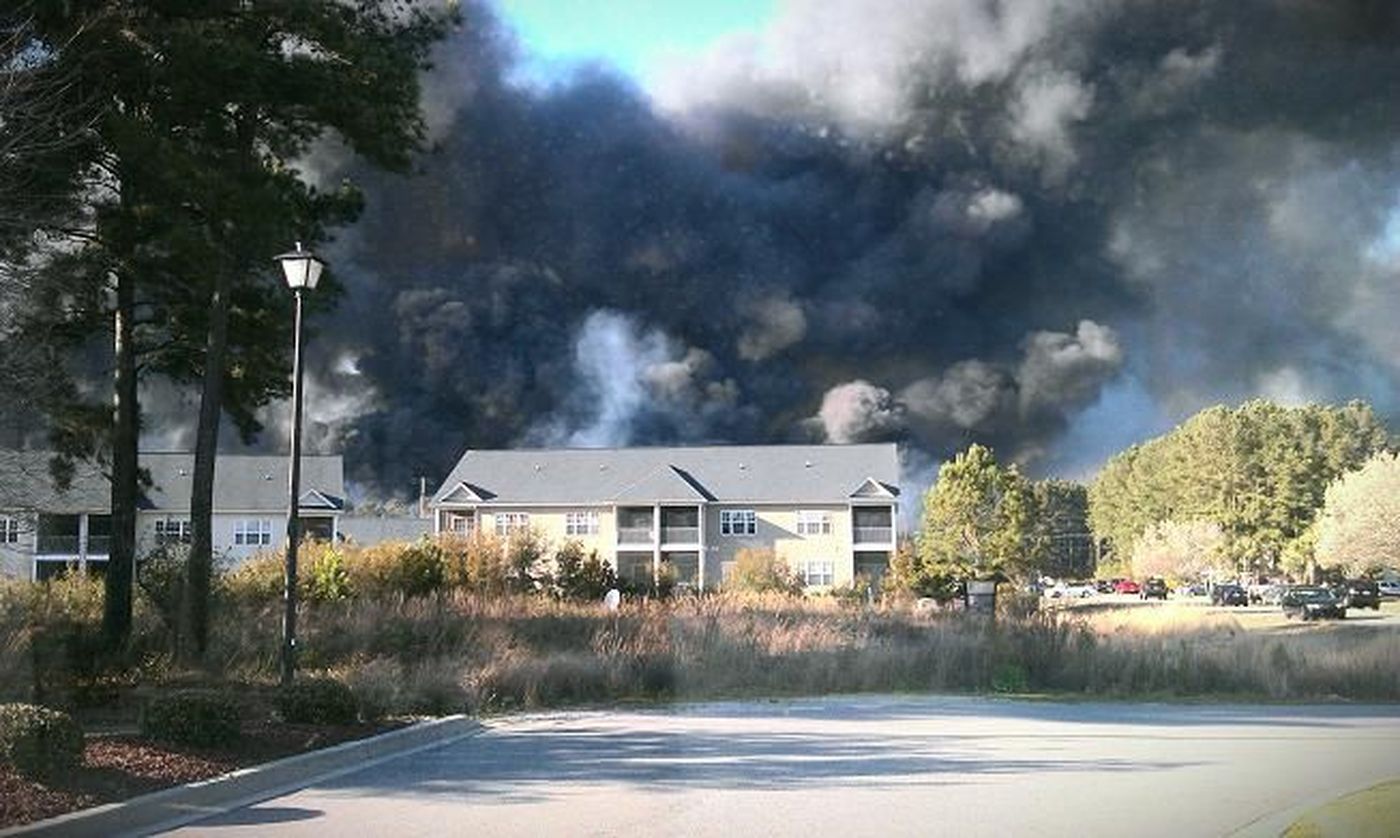
Development pushed out to the edge of fire-prone forestsThe Windsor Green fire destroyed six buildings — 104 units — in a condominium complex in Horry County. Most residents lived in Barefoot Resort full-time, were younger and employed.
Context
“10 years ago, 15 years ago [there] was nothing… [fire] burned, but it wasn’t necessarily a real impact on me as an individual because people didn’t live there. I think the fact that people live there now, obviously it’s created the concern, the idea that it is an issue.” Horry County Emergency Manager
- Dramatic increase in home construction, mostly in dense planned-unit-developments and self-contained subdivisions
- No formal regulations requiring defensible space or fire-resistant building materials
- Flammable crepe myrtles and pine straw used extensively in landscaping, often close to homes
- Developments often abut extremely fire-prone state-protected lands and pine wetlands where fire suppression is difficult
- Both newcomers and long-time residents had little experience with wildfire, until housing demand pushed development to the forest’s edge
Impact
Insurance was readily available so housing recovery was relatively rapid after both fires, mainly handled by Home Owners Associations for planned-unit-development.
The South Carolina Forestry Commission created a new position to promote residential mitigation and support neighborhoods that pursue Firewise certification. An additional twelve communities have been formally recognized as Firewise communities and others are continuing to pursue certification. Firewise Communities depend on homeowners helping themselves by creating defensible space around their homes.
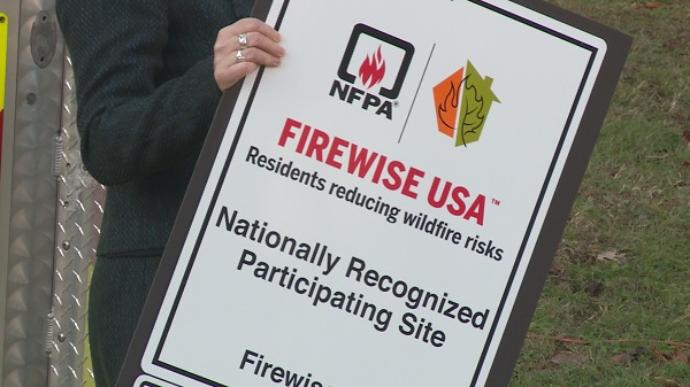
Challenges
- Community leaders were concerned that home landscaping preferences could not be easily changed. For example, even after the wildfires, residents in many neighborhoods continue to use highly-flammable pine straw as mulch. And, in some communities, internal politicking prevented the homeowner association from adopting FireWise certification.
- Despite interest by local governments in wildfire mitigation, elected officials find only scant community support for regulations that require defensible space maintenance or fire-resistant home materials. In fact, concern about wildfire risk appears to have waned since the fires.
- Paradoxically, the County’s commitment to preserve open space has increased risk to property and people. Many projects were built immediately adjacent to undeveloped lands, without a vegetative buffer that could be thinned or managed between the housing and fire-prone vegetation.
“Now, the problem that we run into is that most of those communities back up to basically an unmitigated, unmanaged wildland that’s extremely flammable. You can be within 10 feet of your home and have a solid wall of wax myrtles and other flammable vegetation. So the growth of [housing] has really thrown in a huge monkey wrench on wildfires and the risk and the danger for this area.” South Carolina Forestry Commission
HOAs must now work with the open space landowners and the U.S. Army Corps of Engineers to try to establish buffers in land outside their developments.
The Station Fire (2009), Los Angeles, California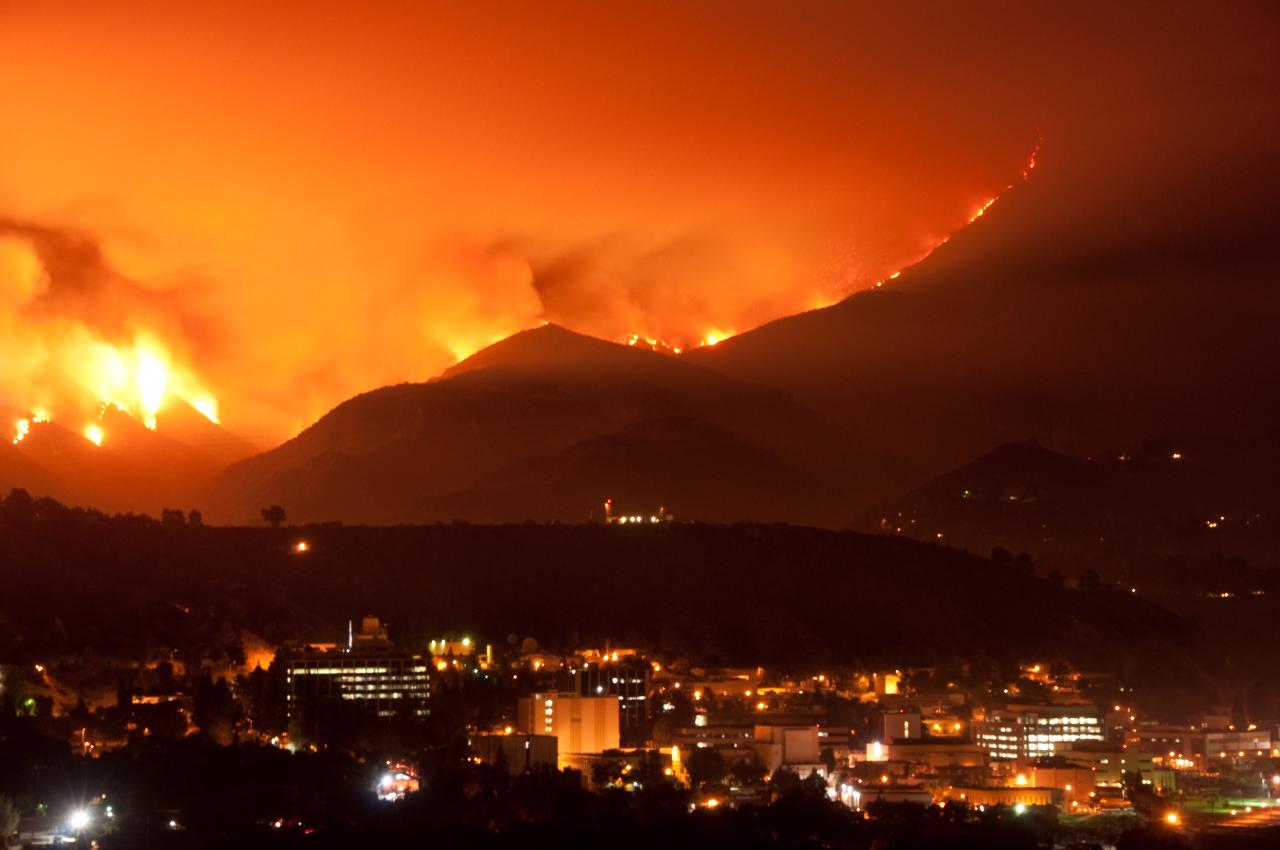
Los Angeles County is the most populous county in the United States and contains a complex patchwork of jurisdictions, with 88 separate cities falling within LA County, including the city of Los Angeles. Housing development around the southern edge of the Angeles National Forest has continued to grow over the past decades, mostly in planned subdivisions or suburban neighborhoods. Hillside locations are prized for their proximity to open space and views of the metropolitan area.
Much of LA County is fire-prone, with a combination of fire-adapted chaparral vegetation and dynamic weather of a Mediterranean climate. Los Angeles County has a long history of wildfires causing damage to homes and threats from many other natural hazards including earthquakes, mudslides and debris flows, and post-fire flooding. Even so, development continues in the wildland-urban interface, and housing prices have soared.
History and Context
The Angeles National Forest has a long history of fire suppression and mitigation, including the use of fuel breaks and prescribed fire, to promote fire-resilient ecosystems and prevent destructive wildfire from burning adjacent development.
“So we’ve been in this business for a very long time.” LA County Department of Public Works
Los Angeles County years ago had adopted formal regulations for homes within state-mapped Fire Hazard Severity Zones. The rules require as much as 200 feet of clearance between structure and forest; buildings must be be build with fire-resistant materials. But older homes were more vulnerable, often because of the lack of defensible space. Residents of the Stonyvale-Vogel Flats in-holding considered forming a Fire Safe Council, but had not pursued it.
Impact
After escaping initial containment efforts, the Station Fire underwent periods of rapid growth and extreme fire behavior, ultimately threatening thousands of homes in nearby communities. In total, the fire destroyed 89 homes and 29 commercial buildings, with approximately two-thirds of homes lost either in or bordering the southern part of the Angeles NF. Approximately 30 homes were lost in the in-holding near the southern border of the forest.
Vegetation and Management Post-Fire
The Station Fire was extremely controversial, with much of the post-fire public attention focused on evaluating and revising Forest Service suppression strategies (GAO 2011). Housing recovery in the Stonyvale-Vogel Flats inholding has been limited, in large part because those wishing to rebuild must comply with current LA County codes requiring use of use fire-resistant materials and creation of defensible space around their homes. Recreation residences on land leased from the Forest Service have not been permitted to rebuild. The challenges of supplying access, siting septic systems, and providing appropriate water supply (in cisterns) for fire suppression have proven prohibitively expensive.
“[A resident] was going to build this beautiful place. He had the drawings. He was ready to go, and then the fire came and as he came to understand what [LA County Fire] was requiring, it would have cost him like a million dollars or something. So, he left.” — Local Community Leader
A lengthy drought slowed vegetation recovery, and prevented prescribed burning in broader LA County and unburned areas of the Angeles National Forest.
But a major change in policy — recommended by the Government Accountability Office in 2011 — allowed homeowners to clear defensible space within the Angeles National Forest, up to 300 meters around their property. Forest Service staff acknowledged the program had benefits; logistical and financial constraints prevent them from performing fuel treatments for all homes adjacent to or within the National Forest. But they expressed concern about the cost of NEPA analyses for each request to thin even a small portion of the forest.
After two seasons, no homeowners had yet enrolled in the program. Forest Service employees continue to simplify the enrollment process, and pursue group action via California’s Fire Safe Councils program. And California’s Department of Forestry and Fire Protection offers one of the most comprehensive approaches to fire risk reduction by communities and individual property owners.
Lessons Learned
- Recommendations for local communities focus on adaptation strategies that consider unique community values, environments, and situations.
- These selected locations changed vegetation mitigation through a variety of pathways including formal, voluntary programs (i.e., Firewise, cost-share with state DNR), formal regulations enacted by the Forest Service, and/or informal conversations and education.
- Post-fire responses were based on the communities’ prior knowledge of wildfire, local and governmental capacity to recover and rebuild, and homeowner and landowner willingness to participate in vegetation management programs.
- Many solutions were dependent on changes to policies or programs that existed before the fire, and were deemed in need of expansion or adjustment after the fire.
- Differences in post-fire vegetation management reflected the configuration and extent of open space, within private land and public land, as well as residents’ background with land stewardship and interest in governmental programs and collective action.
- Additional investment in state agency staff led to increased wildfire education and outreach, including vegetation mitigation.
- Even in Washington, where government oversight and interventions were generally unpopular with residents, fire chiefs and extension agents were crucial in disseminating information regarding vegetation clearing, fuels management, and land stewardship.
- Trust and agency-community relationships may be key to acceptance of changes in public lands management after a fire. In both the California and South Carolina study sites, there was increased interest in vegetation management on open space or public lands to protect homes from future loss to wildfire. But these changes took different forms. Interest in vegetation stewardship in Horry County, SC, increased as residents began to see themselves as part of a fire-prone community and began working to try to implement fuel breaks between their communities and onto open space and public lands. In LA County, the public land owner (Angeles National Forest) changed policy to facilitate private land-owners’ defensible space treatments onto public lands. However, it may be challenging for homeowners to pursue this opportunity individually, and forest managers now think Fire Safe Councils might be best positioned to take on such an effort.
- Voluntary programs such as Firewise or vegetation mitigation programs were commonly pursued as a first step immediately after wildfire.
- Although Firewise programs aren’t primarily intended to change broader community policies or attitudes surrounding wildland fire, the presence of a certified Firewise community may serve as an example to surrounding neighborhoods.
- For communities ready to make broader governance and management changes, the Fire Adapted Communities (FAC) program provides a variety of guidance and reference materials.
- While initial management changes may help create a more fire-resilient community, strategies and policies for fire-adapted land stewardship must evolve, even as memory of past fires begins to wane. In the study areas where residents had rebuilt housing after the fire, study participants were already concerned that community awareness about wildfire was fading as time passed.

